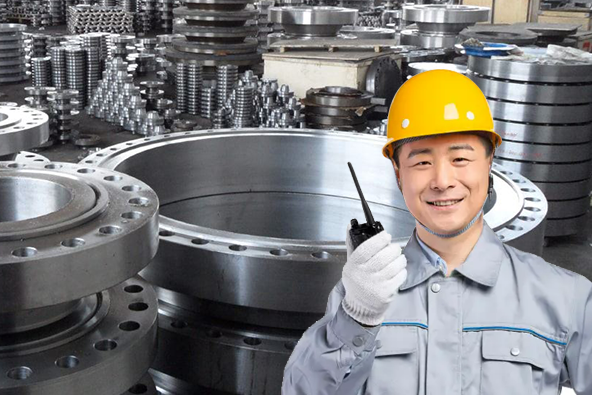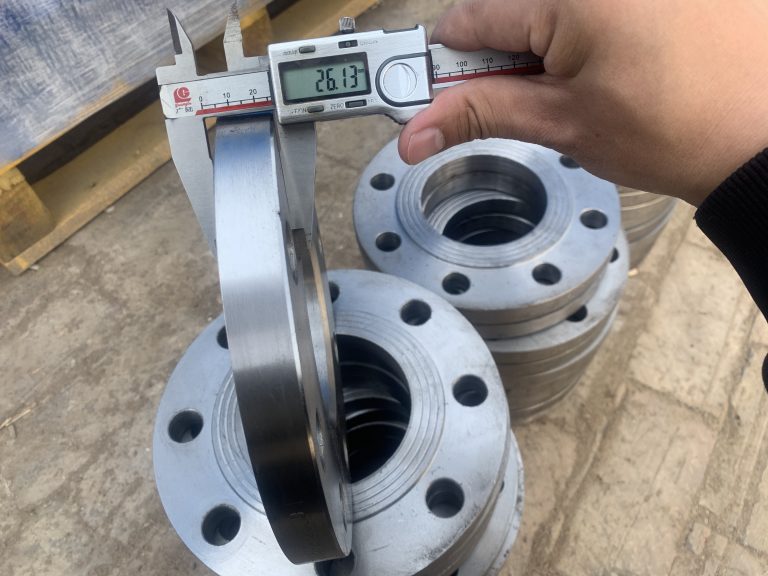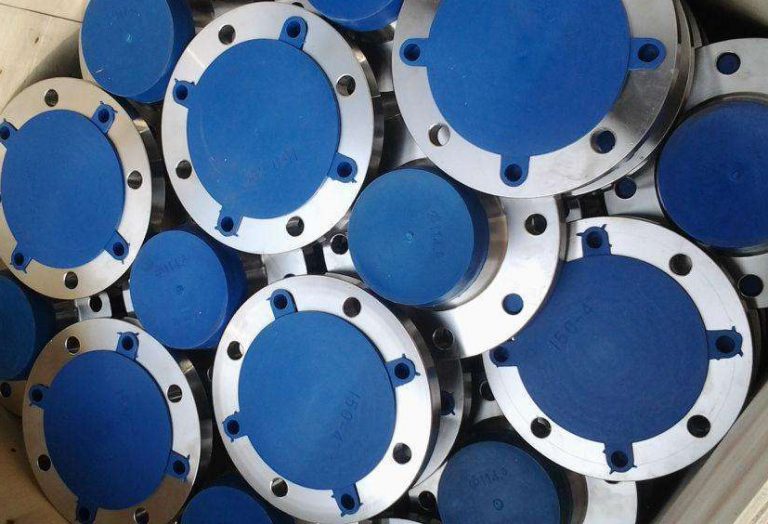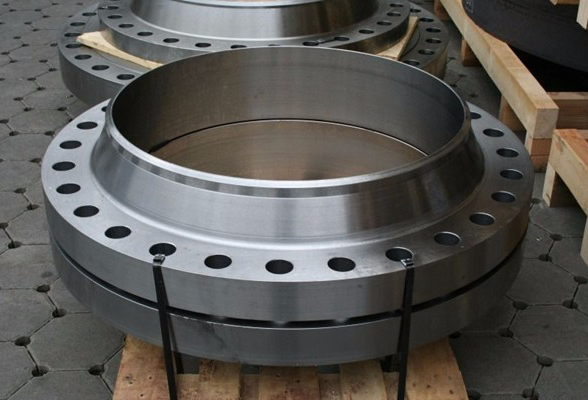When it comes to connecting pipelines, flanges are an indispensable component. However, choosing the right flange is not an easy task, as there are many different flange standards in the market. To avoid selecting the wrong flange and to ensure the safety and reliability of your pipeline system, understanding the different flange standards becomes crucial. In this blog post, we provide a beginner’s guide to help you understand different flange standards and provide useful guidance for making informed decisions when selecting the right flange.
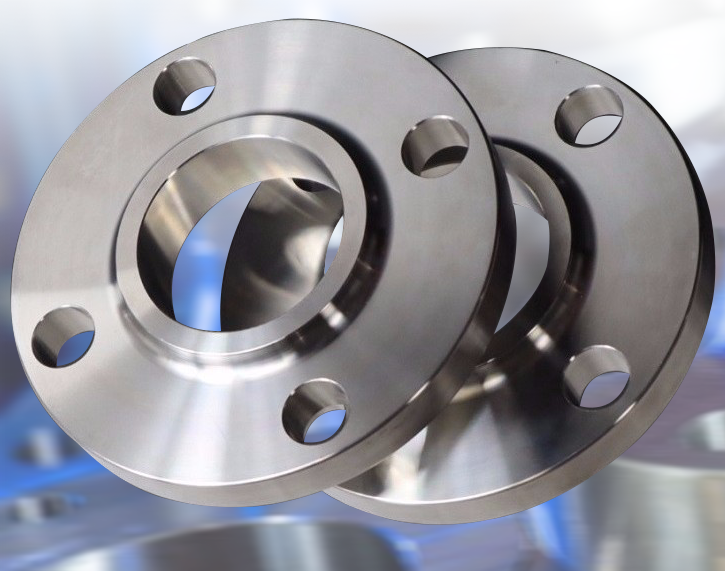


I. Introduction
Flanges are an essential component in connecting pipelines, and selecting the right flange is critical to ensure the safety and reliability of your pipeline system. However, the multitude of flange standards available in the market can make it a daunting task to choose the appropriate one.
The purpose of this blog post is to provide a beginner’s guide to understanding different flange standards. By the end of this guide, readers will have a clear understanding of the most common flange standards, their differences, and how to choose the appropriate flange for their pipeline system. This guide aims to assist readers in making informed decisions when selecting the right flange, ensuring the safety and reliability of their pipeline system.
II. Overview of Flanges
Definition
Flange refers to a component that connects two pipes, valves, pumps, or other equipment together. It usually has a flat or raised surface with bolt holes around the perimeter, allowing for easy installation and removal. Flanges come in a variety of shapes and sizes and are made from various materials depending on the specific application requirements. They are essential in providing a secure and leak-proof connection between two components in a pipeline system.
Uses
The primary use of flanges is to provide a secure and leak-proof connection between two pipes or other components in a pipeline system. They allow for easy installation and removal, making maintenance and repairs more accessible. Flanges also provide a means to isolate or control the flow of fluid or gas in the pipeline system. Additionally, they can be used to connect various types of equipment such as valves, pumps, and filters. Overall, flanges play a crucial role in ensuring the safe and efficient operation of pipeline systems.

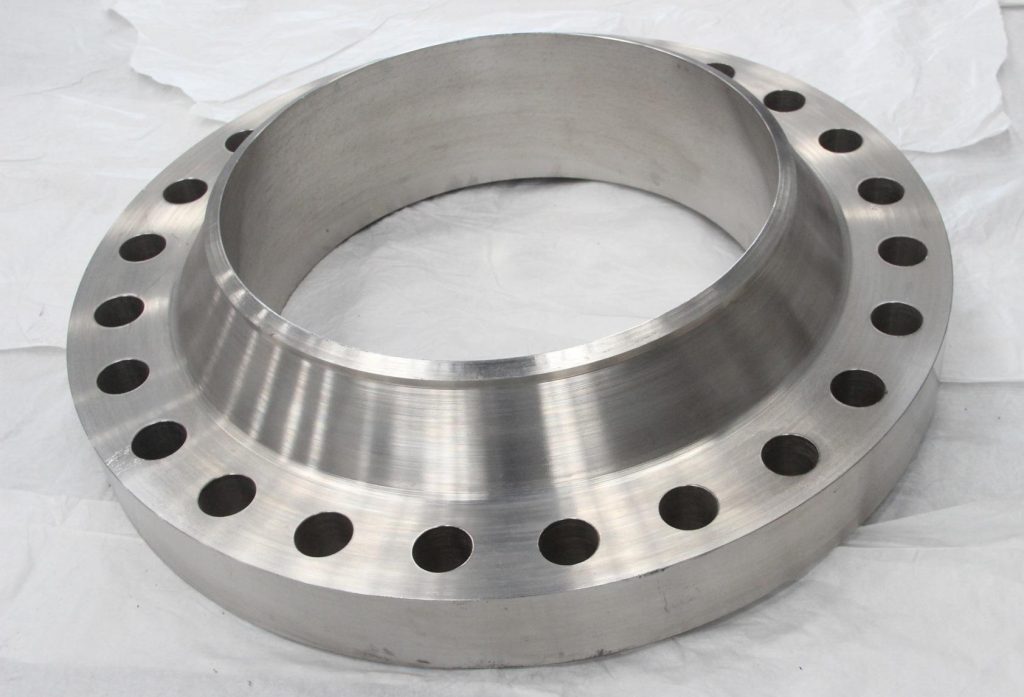

Components
A flange is made up of several components that work together to form a secure and leak-proof connection. These components include:
Flange Face: The flange face is the flat or raised surface of the flange that comes into contact with the gasket and the mating flange.
Bolt Holes: Flanges have bolt holes around the perimeter that allow for bolts to be inserted to hold the flanges together.
Gasket: The gasket is a compressible material that sits between the flange faces, forming a seal to prevent leaks.
Bolts and Nuts: Bolts and nuts are used to tighten the flanges together, compressing the gasket and forming a tight seal.
Flange Finish: Flanges can have various finishes, such as a smooth finish, serrated finish, or grooved finish, depending on the application requirements.
Overall, these components work together to ensure a secure and leak-proof connection in a pipeline system.
III. Different Flange Standards
American Standards (ASME/ANSI)
Definition
American Standards for flanges are established by two organizations, the American Society of Mechanical Engineers (ASME) and the American National Standards Institute (ANSI). These standards provide guidelines for the design, dimensions, materials, and performance of flanges used in a variety of industries, including oil and gas, chemical processing, and power generation. ASME/ANSI flanges are widely used in the United States and other countries that follow American engineering practices, and they come in various types, including weld neck flanges, slip-on flanges, socket weld flanges, threaded flanges, blind flanges, and lap joint flanges. The pressure ratings of ASME/ANSI flanges range from 150 pounds to 2500 pounds, and they are typically made from carbon steel, stainless steel, or other alloys. These flanges play a crucial role in ensuring the safe and efficient operation of pipeline systems, and their compliance with ASME/ANSI standards ensures their quality, safety, and compatibility with other components.
Common ASME/ANSI standards
There are several ASME/ANSI standards for flanges, each specifying the requirements for a specific type of flange. Some of the most common ASME/ANSI flange standards include:
ASME/ANSI B16.5: This standard covers weld neck, slip-on, socket weld, threaded, and blind flanges. It specifies the dimensions, materials, and pressure ratings for these flanges.
ASME/ANSI B16.47: This standard covers large-diameter flanges, including weld neck and blind flanges. It specifies the dimensions, materials, and pressure ratings for these flanges.
ASME/ANSI B16.36: This standard covers orifice flanges, which are used in applications where the flow of fluid or gas needs to be measured or controlled.
ASME/ANSI B16.48: This standard covers spectacle blinds, which are used to isolate sections of a pipeline system.
ASME/ANSI B16.9: This standard covers butt-welding fittings, including flanges. It specifies the dimensions, materials, and pressure ratings for these fittings.
These ASME/ANSI standards provide a comprehensive set of guidelines for the design and manufacture of flanges, ensuring their quality, safety, and compatibility with other components in a pipeline system.
European Standards (EN)
Definition
European Standards for flanges are established by the European Committee for Standardization (CEN). These standards provide guidelines for the design, dimensions, materials, and performance of flanges used in a variety of industries, including oil and gas, chemical processing, and power generation. EN flanges are widely used in Europe and other countries that follow European engineering practices.
The EN standards cover a wide range of flange types and materials, including weld neck, slip-on, socket weld, threaded, blind, and lap joint flanges. These standards also specify dimensions, materials, and other requirements for flanges based on their size and pressure rating.
EN flanges are typically made from carbon steel, stainless steel, or other alloys, and their pressure ratings range from PN 6 to PN 100. These flanges are commonly used in a variety of industries, including oil and gas, chemical processing, and power generation.
Overall, EN standards provide a comprehensive set of guidelines for the design and manufacture of flanges, ensuring their quality, safety, and compatibility with other components in a pipeline system.
Common EN standards
There are several EN standards for flanges, each specifying the requirements for a specific type of flange. Some of the most common EN flange standards include:
EN 1092-1: This standard covers a wide range of flange types, including weld neck, slip-on, threaded, and blind flanges. It specifies the dimensions, materials, and pressure ratings for these flanges.
EN 1759-1: This standard covers screw thread flanges, which are used in applications where high pressure and temperature are present.
EN 1514-1: This standard covers gasket dimensions and tolerances for flanges used in piping applications.
EN 1591-1: This standard covers the calculation of bolted flange connections, including the determination of the required bolt torque.
EN 1759-2: This standard covers grooved flanges, which are used in applications where quick assembly and disassembly are required.
These EN standards provide a comprehensive set of guidelines for the design and manufacture of flanges, ensuring their quality, safety, and compatibility with other components in a pipeline system.
Japanese Standards (JIS)
Definition
Japanese Standards for flanges are established by the Japanese Industrial Standards Committee (JISC). JIS flange standards provide guidelines for the design, dimensions, materials, and performance of flanges used in a variety of industries, including oil and gas, chemical processing, and power generation. JIS flanges are widely used in Japan and other countries that follow Japanese engineering practices.
JIS standards cover a wide range of flange types and materials, including weld neck, slip-on, socket weld, threaded, blind, and lap joint flanges. These standards also specify dimensions, materials, and other requirements for flanges based on their size and pressure rating.
JIS flanges are typically made from carbon steel, stainless steel, or other alloys, and their pressure ratings range from 5K to 63K. These flanges are commonly used in a variety of industries, including oil and gas, chemical processing, and power generation.
Overall, JIS standards provide a comprehensive set of guidelines for the design and manufacture of flanges, ensuring their quality, safety, and compatibility with other components in a pipeline system.
Common JIS standards
There are several JIS standards for flanges, each specifying the requirements for a specific type of flange. Some of the most common JIS flange standards include:
JIS B2220: This standard covers a wide range of flange types, including weld neck, slip-on, threaded, and blind flanges. It specifies the dimensions, materials, and pressure ratings for these flanges.
JIS B2291: This standard covers hydraulic flanges, which are used in hydraulic systems to connect pipes, tubes, and hoses.
JIS B2293: This standard covers compact flanges, which are used in high-pressure applications.
JIS B2221: This standard covers lap joint flanges, which are used in low-pressure applications and in conjunction with stub ends.
JIS B2239: This standard covers socket weld flanges, which are used in high-pressure applications.
These JIS standards provide a comprehensive set of guidelines for the design and manufacture of flanges, ensuring their quality, safety, and compatibility with other components in a pipeline system.


Chinese Standards (GB)
Definition
Chinese Standards for flanges are established by the General Administration of Quality Supervision, Inspection, and Quarantine of the People’s Republic of China (AQSIQ) and the Standardization Administration of China (SAC). GB flange standards provide guidelines for the design, dimensions, materials, and performance of flanges used in a variety of industries, including oil and gas, chemical processing, and power generation. GB flanges are widely used in China and other countries that follow Chinese engineering practices.
GB standards cover a wide range of flange types and materials, including weld neck, slip-on, socket weld, threaded, blind, and lap joint flanges. These standards also specify dimensions, materials, and other requirements for flanges based on their size and pressure rating.
GB flanges are typically made from carbon steel, stainless steel, or other alloys, and their pressure ratings range from PN 0.25 to PN 42. These flanges are commonly used in a variety of industries, including oil and gas, chemical processing, and power generation.
Overall, GB standards provide a comprehensive set of guidelines for the design and manufacture of flanges, ensuring their quality, safety, and compatibility with other components in a pipeline system.
Common GB standards
There are several GB standards for flanges, each specifying the requirements for a specific type of flange. Some of the most common GB flange standards include:
GB/T 9112: This standard covers weld neck, slip-on, threaded, and blind flanges with nominal pressure ratings from PN 0.6 to PN 100.
GB/T 9124: This standard covers lap joint flanges with nominal pressure ratings from PN 0.6 to PN 10.
GB/T 13402: This standard covers steel plate flanges with nominal pressure ratings from PN 0.6 to PN 6.4.
GB/T 14626: This standard covers socket weld flanges with nominal pressure ratings from PN 0.6 to PN 32.
GB/T 16761: This standard covers loose flanges and welded backing flanges with nominal pressure ratings from PN 0.25 to PN 16.
These GB standards provide a comprehensive set of guidelines for the design and manufacture of flanges, ensuring their quality, safety, and compatibility with other components in a pipeline system.
IV. Differences between Standards
The main differences between flange standards can be summarized in five aspects: Appearance, Dimensions, Materials, Pressure Ratings, and Applications.
1、Appearance
The appearance of flanges can vary depending on the standard. For example, ASME/ANSI flanges have a raised face and a smooth finish, which helps to create a seal between the flange faces. EN flanges, on the other hand, have a thinner flange thickness compared to ASME/ANSI flanges, which makes them more suitable for lightweight applications. JIS flanges have a flat face and a serrated finish, which provides a better grip when tightening the bolts.
2、Dimensions
The dimensions of flanges can vary significantly between standards. For example, EN flanges have a thinner flange thickness and smaller bolt circle diameter compared to ASME/ANSI flanges, which can make them more suitable for lightweight applications. JIS flanges have a larger outer diameter than ASME/ANSI flanges, which can affect their compatibility with other components.
3、Materials
Different standards can specify different materials for flanges. For example, ASME/ANSI flanges can be made from a variety of materials, including carbon steel flanges, stainless steel flanges, and alloy steel flanges. JIS flanges are typically made from carbon steel, while EN flanges can be made from carbon steel, stainless steel, and alloy steel, as well as non-metallic materials like PVC and PTFE. The choice of material depends on factors such as the operating temperature, pressure, and corrosive environment.
4、Pressure ratings
The pressure ratings of flanges can vary between standards, with some standards having higher pressure ratings than others. For example, ASME/ANSI flanges have higher pressure ratings than JIS flanges, making them more suitable for high-pressure applications. EN flanges typically have intermediate pressure ratings between ASME/ANSI and JIS flanges.
5、Applications
Different standards are designed to meet the specific needs of different industries and applications. For example, ASME/ANSI flanges are commonly used in the oil and gas, chemical processing, and power generation industries. JIS flanges are commonly used in the shipbuilding and marine industries. EN flanges are widely used in various industries, including food and beverage, pharmaceuticals, and water treatment.
In summary, the differences between flange standards in terms of Appearance, Dimensions, Materials, Pressure Ratings, and Applications can have a significant impact on their suitability for a specific application. It is important to carefully consider these factors when selecting a flange to ensure compatibility with other components and to maintain the safety and reliability of the pipeline system.
V. How to Choose the Right Flange Standard
Choosing the right flange standard involves careful consideration of several factors. Here are some steps to follow when selecting the appropriate flange standard:
1、Determine application requirements
The first step is to determine the application requirements, such as the type of fluid or gas being transported, operating temperature and pressure, and any other specific conditions. This information will help you determine the appropriate flange standard that can meet the demands of your application.
2、Choose the appropriate material
Once you have determined the application requirements, the next step is to choose the appropriate material for the flange. The choice of material will depend on factors such as the operating temperature and pressure, the corrosive environment, and the mechanical properties required for the application. Different flange standards may specify different materials, so it’s important to choose a standard that offers the appropriate material options.
3、Determine appropriate pressure rating
The pressure rating of the flange is another important factor to consider when selecting the appropriate standard. You will need to determine the maximum pressure that the flange will be exposed to in the application, and choose a flange standard that can handle that pressure. It’s important to note that different standards may have different pressure ratings, so it’s important to choose the appropriate standard based on the pressure requirements of your application.
4、Determine the appropriate size
The final step is to determine the appropriate size of the flange. This will depend on factors such as the size of the pipes being connected, the flow rate of the fluid or gas, and the pressure requirements of the application. Different flange standards may have different size options, so it’s important to choose a standard that offers the appropriate size range for your application.
In summary, choosing the right flange standard involves a careful consideration of application requirements, appropriate material selection, determining the appropriate pressure rating, and determining the appropriate size. It’s important to choose a flange standard that can meet the demands of your application while maintaining the safety and reliability of the pipeline system.


VI. Conclusion
Summarize different flange standards
Different flange standards, such as ASME/ANSI, EN, JIS, and GB, have different specifications for the appearance, dimensions, materials, pressure ratings, and applications. These differences can impact the safety, reliability, and performance of pipeline systems.
ASME/ANSI flange standards are widely used in the United States and have specific requirements for dimensions, materials, and pressure ratings. EN flange standards are commonly used in Europe and have a more metric-based system. JIS flange standards are specific to Japan and have different materials and dimensions than other standards. GB flange standards are used in China and have different pressure rating systems.
When choosing the appropriate flange standard, it’s important to consider factors such as application requirements, appropriate material selection, determining the appropriate pressure rating, and determining the appropriate size. The right flange standard can ensure the safety, reliability, and performance of pipeline systems.
Reiterate how to choose the appropriate flange standard
To choose the appropriate flange standard, it is important to follow these steps:
Determine the specific application requirements, such as fluid or gas being transported, operating temperature and pressure, and any other specific conditions.
Choose the appropriate material for the flange based on factors such as the operating temperature and pressure, corrosive environment, and mechanical properties required for the application.
Determine the appropriate pressure rating of the flange by considering the maximum pressure it will be exposed to in the application.
Determine the appropriate size of the flange based on factors such as the size of the pipes being connected, the flow rate of the fluid or gas, and the pressure requirements of the application.
By following these steps, you can select a flange standard that meets the demands of your application while maintaining the safety and reliability of the pipeline system. It is important to choose a flange standard that offers the appropriate material options, pressure ratings, and size options for your specific application requirements.
Emphasize the importance of selecting the right flange standard
Selecting the right flange standard is crucial to the safety, reliability, and performance of pipeline systems. Flanges connect pipes, valves, and other components, and must withstand the pressure and temperature of the fluid or gas being transported. A poorly selected flange can cause leaks, failures, and potentially catastrophic accidents.
The differences between flange standards, such as appearance, dimensions, materials, pressure ratings, and applications, can impact the safety and reliability of the pipeline system. For example, selecting a flange standard with a lower pressure rating than required for the application can lead to failure and leaks. Selecting the wrong material for the flange can lead to corrosion and premature failure.
Choosing the appropriate flange standard involves considering the specific application requirements, selecting the appropriate material, determining the appropriate pressure rating, and selecting the appropriate size. Taking the time to properly select the right flange standard can ensure the safety, reliability, and performance of the pipeline system.
Ultimately, the importance of selecting the right flange standard cannot be overstated. It is crucial to ensure the safety of personnel, protect the environment, and maintain the integrity of pipeline systems.
VII. References
The information I provided came from various sources, including industry standards organizations and manufacturers. Here are some of the references I used:
American Society of Mechanical Engineers (ASME): https://www.asme.org/
American National Standards Institute (ANSI): https://www.ansi.org/
European Committee for Standardization (CEN): https://www.cen.eu/
Japanese Industrial Standards Committee (JISC): https://www.jisc.go.jp/
General Administration of Quality Supervision, Inspection and Quarantine of the People’s Republic of China (AQSIQ): http://english.aqsiq.gov.cn/
Lewis Liu
Hello, I am Lewis Liu, a professional sales engineer with over ten years of experience in the flange fittings industry. I am highly knowledgeable in flange selection, installation, and maintenance. I am passionate about providing customers with the best solutions to ensure their pipeline systems run smoothly, safely, and reliably.
If you have any questions or concerns regarding flange fittings for your pipelines, whether it’s about selection, material choice, specification requirements, or any other aspect, please feel free to contact me at any time. I am committed to offering professional advice and assistance to help you make informed decisions and meet your needs.
